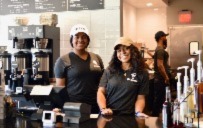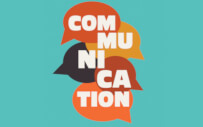
Although new college graduates looking to enter the workforce and employers hiring these graduates agree on which competencies are most important for job candidates to hone, their perception of student proficiency in them differs.

CUNY SPS recognized that certain curricula could better communicate to students how their courses address career competencies and the significance of the competencies in achieving career success.

BYU works to help students understand that they have these transferable skills and competencies that can be used in a variety of ways in a variety of situations.

To prepare students for their transition to the workforce, career centers have to account for the standards of professionalism shifting over the past several years.

Through its Experiential Learning Platform™, Saxbys builds individualized academic partnerships to open cafes that provide exceptional paid experiential learning opportunities for students.

When it comes to the development of college students’ career readiness, industry should be complementary to and support career services professionals and faculty, explain Liz Moran and Lynn Letukas of SAS.

There has been a shift in the requirements of the labor market. Twenty-first century careers demand executive-functioning mindsets and tactical and relational skills, says Allison McWilliams, Ph.D.

A study of computer science and engineering students at the University of Georgia examines their experiences with and perceptions of work-related experiential activities.

Employers play an important role in ensuring that college students are career ready and in developing the competencies that broadly prepare college graduates for this transition. “It’s a role that requires employer engagement with both students and college leadership,” explains Glen Fowler, a past president of NACE and, until his recent retirement, the recruiting and training manager for the California State Auditor’s office.

Colleges must work to ensure that students are aware that skills they’re using and developing in the classroom can be an asset after entering the workforce.

The authors look at the similarities and differences in how college students and employers describe leadership and its various proficiency levels.

LIM College has a unique career education structure that is based on the NACE Competencies and that will allow the college to conduct longitudinal research.

Employers have consistently identified the four career readiness competencies that they find essential in their new college hires.

An escape room at Ball State University helps build critical thinking and problem-solving skills and competencies in students.

Peck and Preston advance the Cocurricular Career Connections (C3) Leadership Model, designed to connect higher education and business and industry.

When it comes to rating the “career readiness” of college graduates, there are differences in perception between students and employers.

While employers rate critical thinking/problem solving as the most essential competency for new hires, they rate their hires more proficient in other areas.

Employers that want to attract and retain the best employees should focus on engaged students.

When asked to rate the career readiness competencies of college graduates in terms of “essential need,” employers view four as vital, according to results of NACE’s Job Outlook 2016 Spring Update.

When asked to assess candidate skills/qualities, employers rated verbal communications skills the most important, according to NACE' s Job Outlook 2016 report.

Research conducted by Aaron James and Troy Nunamaker, Clemson University, indicates that many students under- or overrate their communication skills, perhaps because they are assessing them in the context of an academic setting, not the workplace.

NACE has identified key behaviors that allow college students preparing to enter the workforce to demonstrate their career readiness to prospective employers.

Amy Morrill Bijeau and Beverly Peters, American University, examine whether students can gain career readiness competencies through virtual internships. Their study compared student self-assessments and supervisor evaluations from those taking part in virtual, in person, and hybrid internship experiences.

Career services offices should provide programming and resources to help boost students’ proficiency in critical thinking, communication, and professionalism.

Undergraduate research, scholarship, and creative inquiry experiences can help students build competencies in all eight NACE career readiness competencies.

Last fall, VCU began offering its Interdisciplinary Career Readiness Skills minor, an 18-credit pathway for students to develop today’s most highly sought-after job skills.

To prepare students for their transition to the workforce, career centers have to account for the standards of professionalism shifting over the past several years.

New graduates and their potential employers can agree on which skills are most important for job candidates, but differ on how proficient new graduates are in those abilities.

With an eye toward the future of its workforce, Mohawk Industries provides its candidates and new college hires with development that extends beyond the internship.